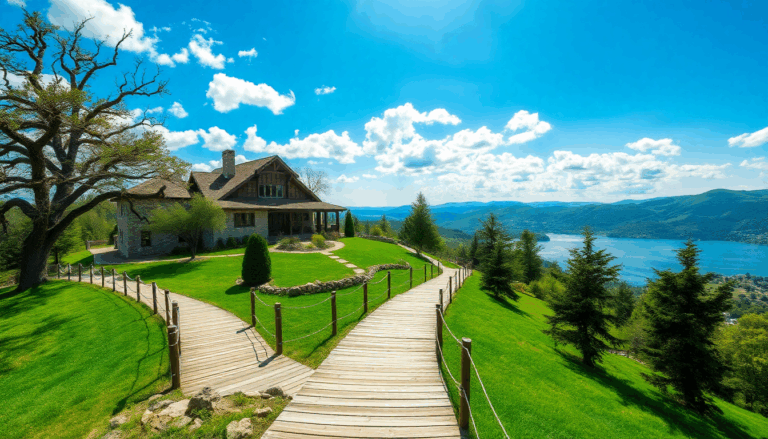In a world where economic stability seems to be a fleeting dream, the allure of a second home is making a significant comeback. Why, you ask? Well, owning a second property isn’t merely about having a place to escape; it’s a strategic move to safeguard savings against inflation and geopolitical upheaval. Who wouldn’t want
a personal haven to retreat to? From quaint villages to famous resort towns, having that special property has become synonymous with financial security for many families. And let’s be honest—there’s something undeniably comforting about having a slice of paradise waiting just for you.
The rising significance of tangible assets
As we venture into 2025, new challenges for investors and savers are emerging, and the concept of a “safe haven” has taken
center stage. With mortgage rates still soaring, real estate offers assurances that many other financial instruments struggle to provide. A second home strikes a perfect balance between potential property appreciation and personal utility. I remember chatting with a friend during a mountain hike; he shared how he transformed his second home into a weekend sanctuary. It became a refuge from the bustling city life, and now, with remote work becoming commonplace,
many are on the hunt for such havens—a place to recharge away from the chaos.
Market trends and opportunities
Market data reveals a growing attraction towards tourist locales—not just coastal areas or mountain retreats, but also charming inland villages. Here, property prices remain significantly lower than in major cities, and the potential for value growth is considerable. But there’s more! Short-term rentals have turned second homes into lucrative income sources. I’ve heard stories from various parts of Italy, especially in the north and artistic cities, where investors quickly recoup their expenses due to a steady influx of tourists. Honestly, it’s an opportunity that shouldn’t be overlooked.
Economic incentives for new buyers
Beyond emotional and functional aspects, the financial prospects of owning a second home are increasingly attractive. Various Italian regions offer incentives for renovating existing properties. While tax bonuses may have diminished compared to previous years, they still serve as a pivotal lever for enhancing property value, particularly in older homes. Personally, I believe that investing in renovations can make the difference between a mediocre purchase and a stellar deal. Who wouldn’t want to elevate their property’s appeal while increasing its market value?
Real estate as a stable investment
In an era of rising inflation, real estate maintains its tangible value. Unlike more volatile investments, property is perceived as a durable asset, one that can be passed down through generations. Those who opt for a second home often do so with the intent of building something lasting—not just for themselves but for their heirs. Moreover, purchasing property can be a strategic move to protect wealth and ensure a solid financial future.
Where to invest: the most sought-after regions
Italian coastal regions remain the most coveted for second home purchases. Areas like Liguria, Tuscany, Puglia, Sardinia, and Sicily attract attention due to their improved infrastructure and variety of services for long-term stays. However, there’s a notable revival in the mountains, especially as people seek cool retreats during increasingly hot summers. Who can resist the breathtaking beauty of the Alps in summer? It’s like breathing in fresh air after a long confinement.
The charm of small towns
Recently, there’s been a surge in interest for small towns, where the cost of living is lower and the authenticity of daily life is a major draw. In these less inflated areas, it’s still possible to find properties at attractive prices, benefiting from mid-term appreciation. Some Italian municipalities are even launching initiatives to attract new residents and investors, fostering the revival of local communities. It’s remarkable how a small initiative can lead to significant transformations.
The evolving profile of the buyer
Interestingly, the profile of buyers is changing. It’s not just families looking for a second home; young investors and professionals are also on the hunt for diversification. The growing focus on energy sustainability is prompting many to seek energy-efficient properties or those that can be renovated with eco-friendly criteria. The European directives on energy savings, in my view, mark a significant step towards a more sustainable future.
Investing in a second home, therefore, stands out as a strategic choice for those seeking stability and security. In an unpredictable landscape, real estate remains a solid anchor for many. With the potential for tourist rentals, tax incentives, and the timeless appeal of Italian real estate, now more than ever, putting money into a second home is an option that deserves careful consideration.

